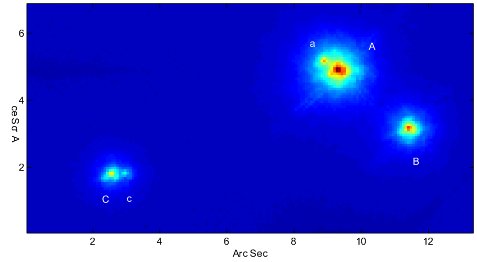
 |
An infrared image made with an adaptive optics system at Lick Observatory shows the locations of the components of Iota Cas. Iota-A dominates the system's brightness. Tucked in just above and to the left of "A" is much fainter Iota-Aa, which mutually orbits Iota-A every 47 years. Iota B and C (the latter also double with the faint "c" component) are visible in a small telescope, and may or may not actually belong to the A-Aa system. Courtesy of Jack Drummond. |